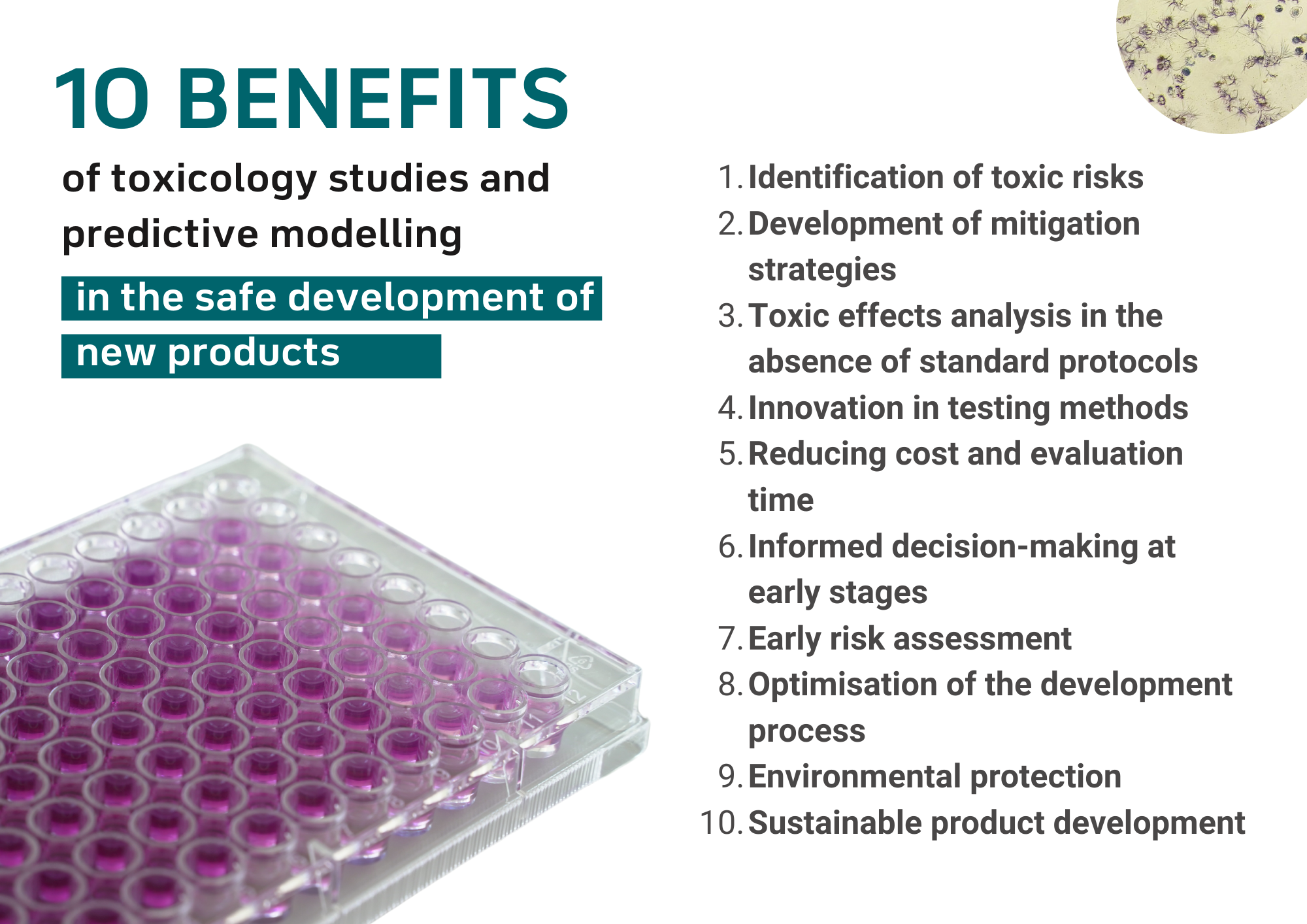How toxicological studies and predictive modelling enhance safety in new product development
Safety and sustainability in new product development is a top priority for any industry. In this context, the combination of toxicological studies and predictive modelling is a powerful tool to identify and mitigate risks from the earliest stages of development.
This integration not only allows the safety of nanomaterials and chemical agents to be assessed more accurately but also facilitates informed decision-making, ensuring that the final products do not pose a hazard to human health and the environment.

Benefits of toxicological studies and predictive modelling in the safe development of new products
• Identification of toxic risks
Toxicological studies provide experimental data on the acute and chronic toxicity of substances, mixtures or products. This information is vital to assess the safety of new developments and to avoid exposure to potentially harmful substances during their manufacturing processes, and even at later stages such as use or end-of-life.
• Developing mitigation strategies
With a clear understanding of the risks, companies can develop mitigation strategies, such as reformulating products or implementing additional security controls during the manufacturing process.
• Toxic effects analysis in the absence of standard protocols
In many cases, traditional testing protocols may not be adequate or available to assess the toxic effects of new materials and chemical agents or even naturally occurring substances. Predictive modelling and toxicological studies can fill this gap, providing a detailed analysis of potential toxic effects even in the absence of standardised testing protocols.
• Innovation in testing methods
The application of innovative approaches and predictive modelling allows companies to develop customised test methods for their specific products. This is especially relevant for nanomaterials or advanced materials, where traditional methods may not capture all possible interactions and effects.
• Reduction of evaluation time and costs
Predictive models can simulate multiple scenarios and experimental conditions, reducing the need for extensive and costly testing. This speeds up the product development process and enables faster safety assessment.
• Informed decision-making at an early stage
Having (eco)toxicological information available early in the development of new products allows for more informed and proactive decision-making. Companies can assess the feasibility and safety of their products from the outset, adjusting their development strategies accordingly.
•Early risk assessment
Early identification of risks allows companies to make informed decisions on whether to continue product development. This minimises investment in products that may prove to be unviable or dangerous.
• Optimisation of the development process
With detailed information on potential risks and toxic effects, companies can optimise their development process, focusing on safe and effective solutions from the outset.
• Environmental protection
Ecotoxicological assessment, focusing on effects on environmental organisms and ecosystems, is also crucial to protect the environment. Ecotoxicological studies and predictive modelling can identify potential environmental impacts of new chemicals and nanomaterials, enabling companies to develop more sustainable and environmentally friendly products.
• Sustainable product development
With a clear understanding of environmental risks, companies can focus on developing products that are not only safe for humans, but also sustainable and environmentally responsible.
The combination of toxicological studies and predictive modelling offers numerous benefits for companies, enabling a comprehensive assessment of the risks associated with new chemical agents and nanomaterials. This combination of tools not only protects human health and the environment, but also improves decision-making and optimises the product development process.
In an increasingly competitive and regulated business environment, the ability to identify and mitigate risks early and efficiently is a key factor for long-term success and sustainability.
-
Shall we talk?
Carlos Fito
Safety and environmental monitoring Area Manager
"*" indicates required fields



